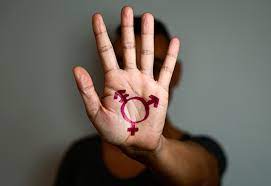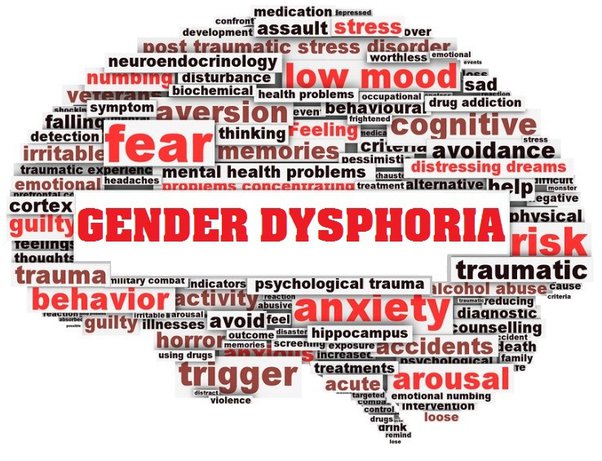For years, the only way to treat gender dysphoria was through transition – surgery, hormones, and living as the opposite gender. However, there is now another option: treating gender dysphoria without transition. This approach is just as effective as the transition for many people, and it comes with several benefits. In this blog post, we will discuss the treatment of gender dysphoria without transition and how it can further help you or your loved one live a happy life in their true gender identity.
Contents
Understanding Gender Dysphoria

Gender dysphoria is a condition in which someone experiences distress due to a mismatch between their gender identity and their sex assigned at birth. For example, a person with female sex assigned at birth may identify as male. This mismatch can cause significant distress and anxiety, and it can interfere with many aspects of life such as work, school, and personal relationships.
Symptoms Of Gender Dysphoria
The symptoms of gender dysphoria can vary from person to person, but they typically include:
- a strong desire to be the opposite gender
- feeling of being trapped in the wrong body
- dislike of one’s sex organs
- wanting to be treated as another gender
Diagnosing Gender Dysphoria
If you think you or your loved one may have gender dysphoria, it is important to see a qualified mental health professional for an evaluation. They will ask about your history and symptoms to further determine if you meet the criteria for gender dysphoria provided by the DSM-5.
The DSM-5 defines gender dysphoria in adolescents and adults as a marked incongruence between one’s experienced/expressed gender and their assigned gender, lasting at least 6 months, as manifested by at least two of the following:
- A marked incongruence between one’s expressed gender and primary and/or secondary sex characteristics
- A strong desire to get rid of one’s primary and/or secondary sex characteristics because of a marked incongruence with one’s expressed gender.
- A strong desire to be of the other gender (or some alternative gender different from one’s assigned gender)
- A willingness to be treated as the other gender (or some alternative gender different from one’s assigned gender)
- A dominant conviction that one has the typical feelings and reactions of the other gender (or some alternative gender different from one’s assigned gender)
Treating Gender Dysphoria

There are two main types of treatment for gender dysphoria
- Transition
- Non-transition.
Transition involves changing your appearance and/or body to match your gender identity through ways such as surgery, hormones, or both. It also refers to procedures that help people transition to their self-identified gender. Also known as gender-affirming surgery, it gives people a body that aligns with their gender identity. Some examples include methods such as the use of puberty blockers, genital/chest surgery, or laser hair treatment.
Disclaimer: As with any medical treatment, the anticipated risks and benefits should further be considered by a patient and prescribing doctor on an individual basis.
Alternatives To Transition Surgery
There can be various reasons one might not want to undergo transition surgery. These can include personal, familial, social, or financial reasons. However, there are still alternatives by which one can feel more affirmed with their identity. These include:
- Psychological counseling/psychotherapy to handle thoughts of stress or discomfort surrounding gender.
- Altering hairstyle, clothing, or makeup choices, either part-time or full-time.
- Exercising to reduce/gain weight or making certain parts of the body (chest, biceps) more or less pronounced to feel in touch with certain gendered characteristics.
- Removing/growing facial or body hair
- Undergoing cosmetic surgery to alter certain facial/bodily features to feel close to the expression of the desired gender.
- Practicing the use of preferred pronouns by self-dialogue, or asking others to use it for you.
- Taking hormone therapy to match the features of the desired gender identity.
- Taking practical training to learn skills on how to adjust to changing social environments.
- Voice therapy to reduce/increase the pitch and sound of the voice to sound closer to the way you identify with.
Benefits Of Transition Alternates

Depending upon the severity and need for treatment of the individual, different methods have different benefits for various people. Some general advantages may include:
- avoiding the risks associated with surgery
- testing your willingness and comfort to live as your desired gender identity
- provides for a more inclusive and approachable method for those with gender identities outside the binary (non-binary, genderfluidity, etc.)
- maintaining your reproductive organs and fertility
- not having to live in a role that doesn’t fit you
- improved state of mental satisfaction in terms of feeling satisfied with gender identity.
- avoiding the social stigma associated with transitioning
- giving more chances to explore the various methods of transitioning before making a final decision.
Conclusion
Treating gender dysphoria without transition is a viable option for many people. If you are considering this approach, it is important to find a mental health professional who is experienced in treating gender dysphoria without transition. They can further help you understand the pros and cons of this approach and make sure that it is the right decision for you. It is also crucial to make an informed decision suitable to your identity, comfort level, budget, and practicality.
A Word From Therapy Mantra
Your mental health — Your psychological, emotional, and social well-being — has an impact on every aspect of your life. Positive mental health essentially allows you to effectively deal with life’s everyday challenges.
At TherapyMantra, we have a team of therapists who provide affordable online therapy to assist you with issues such as depression, anxiety, stress, workplace Issues, addiction, relationship, OCD, LGBTQ, and PTSD. You can book a free therapy or download our free Android or iOS app.


